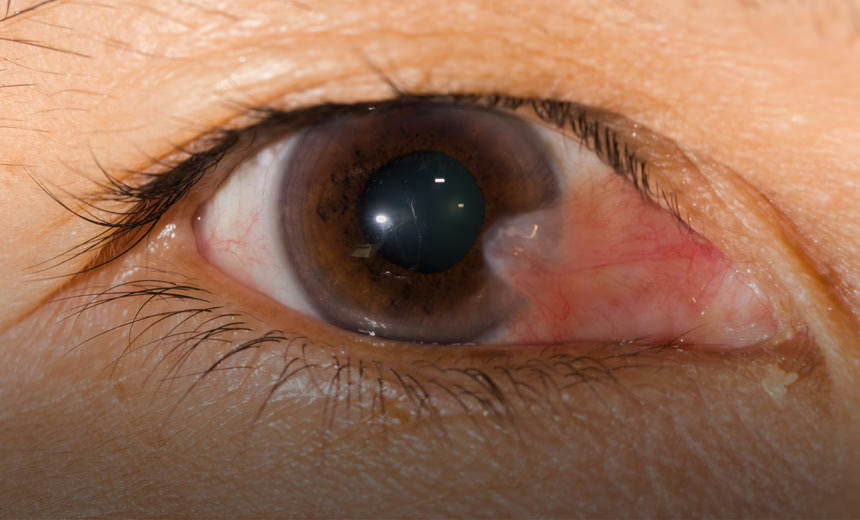"*" indicates required fields
Is having a pterygium dangerous?
10/10/2017

A pterygium is a visible growth on the surface of the eye. It typically emerges as a triangular, soft-tissue growth from the corner of the eye, with a pink and fleshy appearance. This growth is the body’s way of trying to protect the eye from intense environments, such as high levels of sunlight, dust, sand or wind. Surfers are one group of people who are prone to developing this condition, which is also known as Surfer’s Eye. Other at-risk groups include farmers, welders and people living in northern (sunnier) areas of Australia.
In general, pterygia (plural) are not dangerous. During the early stages of pterygium development, the main concern is cosmetic – they change the eye’s appearance – but there is no effect on vision. Symptoms in the early stages may include irritation, itching or burning. These can generally be managed with eye drops. Avoid further exposure to sunlight and wind to reduce the stimulus for it to grow larger. A small pterygium that has stopped growing is relatively harmless and may not need any further treatment.
However, in some cases, the pterygium may continue growing across the eye and either directly block vision or distort the shape of the cornea and cause blurred vision (astigmatism). In these cases, surgery is recommended. Surgery is also an option if you are worried about the cosmetic appearance of your eye.
Importantly, pterygia are not cancerous – they are benign growths. That means that while they may grow locally (and possibly affect your sight), they won’t spread to other parts of your body. Nevertheless, it’s important that you have an ophthalmologist evaluate any growth on your eye to rule out more serious conditions, such as a conjunctival or iris tumour.
And while pterygia themselves are not cancerous, new findings published by Australian researchers suggest that people who have a pterygium are nearly 25% more likely to develop malignant melanoma – a fatal form of skin cancer. Tell your GP or dermatologist if you have (or have had) a pterygium, make sure that you protect your skin from the sun/UV exposure (i.e. sunscreen, long-sleeved tops, shade) and always have regular skin checks.
All medical and surgical procedures have potential complications – check with your ophthalmologist before proceeding.
Enjoyed this article?
More articles by this author
Dr Tess HuynhMore articles on this subject
PterygiumThe information on this page is general in nature. All medical and surgical procedures have potential benefits and risks. Consult your ophthalmologist for specific medical advice.
Date last reviewed: 2023-03-01 | Date for next review: 2025-03-01
